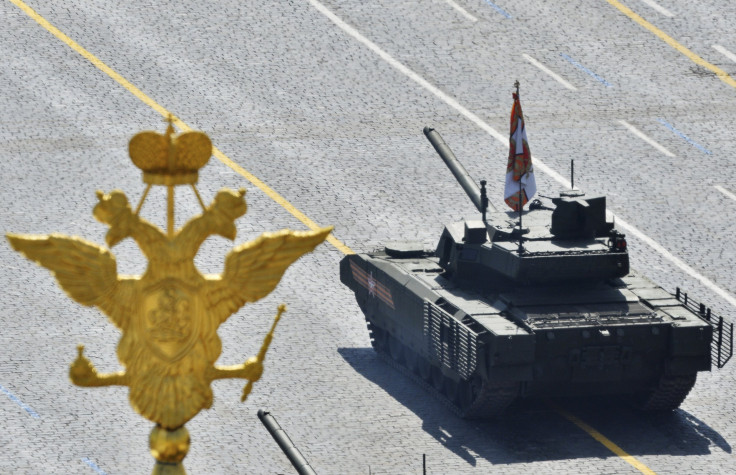Russian Defense Manufacturer Ready To Export Armata Tank To Foreign Buyers

A Russian manufacturer of defense equipment said it was considering the option to export T-14 Armata, the new-generation tanks, to foreign buyers.
Uralvagonzavod said it had talks with various delegations at the recent Russian Arms Expo, and all of them said they were interested in buying the products. However, Uralvagonzavod’s director general Oleg Siyenko said it was not the company’s priority at the moment.
“Our priority is to equip our own armed forces with state-of-the-art hardware,” TASS quoted Siyenko. “But from the point of view of the economy, undoubtedly, we would like to export these products in future.”
Siyenko said European buyers had also expressed interest in buying the products. According to him, potential buyers may include India, China, Saudi Arabia and the United Arab Emirates.
Russian Minister of Trade and Industry Denis Manturov earlier said that after 2020, Russia was ready to have discussions with foreign partners for possible supplies of Armata tanks. Uralvagonzavod is restricted under the state armament program until 2020.
It was earlier reported the Armata platform was scheduled to start operational trials in 2016. Oleg Salyukov, the commander in chief of the Russian army, said the development of the advanced armored vehicles including the Armata-based tank and IFV, Kurganets-25 IFV and Bumerang APC were on schedule. The efforts are planned to be completed in 2016, he said.
Andrey Terlikov, the chief designer of the T-14 Armata tank, earlier said that the future belonged to unmanned battle vehicles.
“To ensure transition to fully robotic machines, we must achieve new levels of automatization, and secure the principles of remote control,” Terlikov told RT. “This vehicle has everything necessary to take the decisive step towards remotely controlled autonomous combat vehicles."
© Copyright IBTimes 2024. All rights reserved.











